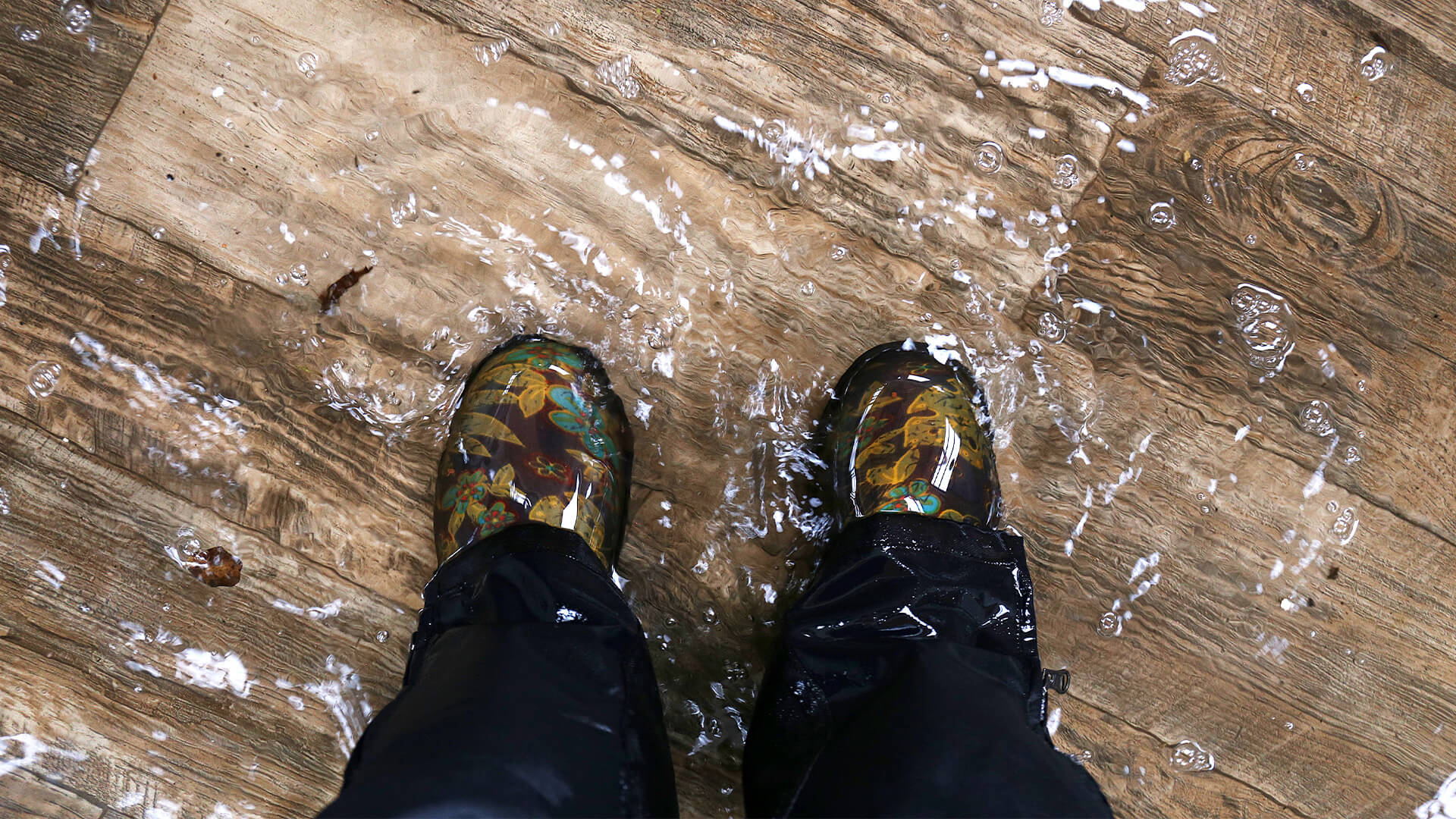By Evelyn Long, Editor-in-Chief of Renovated.
Storms often produce heavy rainfall that can enter homes. If too much water accumulates, it can lead to mold growth and long-term issues. This is why it’s essential to build a structure that is protected against rainfall.
Home builders can use their experiences and skills to recommend flood-resistant building techniques when working with new clients. Here are some tips for creating a flood-resistant property.
1. Raise the Home
Placing a home on stilts or piers can help keep it above the water level. This prevents the risk of groundwater seeping into the floors and causing damage. To elevate the home, separate the foundation from the structure.
Then, use a hydraulic jacking machine to lift the house. The property should only be raised about 1/8 inch a day. This gives the interior materials time to settle.
Another option is to build an elevated floor inside the home or raise the roof. This moves the living areas to the second floor, and the lower one becomes a garage or storage area.
2. Landscaping for Flood Zones
Of course, landscaping also plays a crucial role in flood-resistance. It’s essential to keep the lawn tilted away from the house. This reduces the risk of runoff water entering the home. Also, landscapers should consider using soil containing sand and clay to regrade the lawn. This allows runoff water to empty into a safer place, like street gutters.
Landscapers can also be sure to keep mulch further from the siding. This way, the ground has time to dry after a storm rather than collecting in garden beds directly against the home’s foundation and walls.
3. Install a Sump Pump
Sump pumps are used to remove water from the basement. They contain a pressure sensor that sends a signal to the pump if the water exceeds a specific level, which causes the machine to turn on. Next, the pump draws water out of the sump pit and sends it to the discharge pipes.
To install the device, contractors should dig a deep hole to put the sump basin inside. It should then be covered with layers of gravel and connected to a check valve. Finish by filling the gap with concrete.
4. Apply Sealants to the Structure
Applying sealants to foundations, walls and windows can prevent water from entering. Passages for any plumbing drains should also be sealed. Homeowners should consider using acrylic or liquid rubber coating to cover the basement’s interior.
Also, weatherstripping or caulking are good options to prevent water leaks. These methods can even increase the energy efficiency of a home — a win for both preventing water damage and the homeowner’s energy bills.
5. Add Check Valves
Installing check valves prevents a sewage system from backing up into the house. A check valve is a one-way system that stops reverse flows. This keeps water moving away from the property during heavy rain.
There are multiple types of check valves to choose from, such as swing valves. When deciding, contractors should consider the valve rating, line size and type of installation. They could also use gate valves for a better seal.
6. Point Gutters Away From the Home
If the downspout is pointed toward the home, the runoff water can accumulate around it. This can lead to basement leaks and their accompanying problems, including the risk of mold and mildew. Downspout extensions can help reduce water buildup.
Workers should make sure these pipes are sloped so water can run downhill. They could also consider adding a rain barrel under the gutters, which can collect rainwater and help prevent river pollution.
7. Lift Electrical Systems
Contractors should raise all outlets and switches to prevent damage to electrical devices. This also can reduce the risk of accidental shocking. Another way to protect the outlets is to buy a ground fault circuit interrupter.
This system helps to prevent electrocution. It works by sensing the difference in the amount of electricity flowing in and out of the circuit. If someone is starting to receive a shock, the system shuts off. Homeowners should check these monthly to ensure they are working properly.
8. Incorporate Flood Sensors
Some security systems have flood sensors as an add-on feature. They can help detect small leaks before they become a bigger issue. This is a great preventive measure to reduce the risk of any damage. The device works by sensing increased conductivity between two metal probes.
Contractors should look for a sensor with a 70-100-decibel water detection alarm so homeowners can hear it. They should also consider other features, such as smart home integration and extended battery life.
9. Use the Right Materials
Builders can design homes to be water-resistant from the start by considering the materials they recommend. Concrete or steel materials are ideal for the home’s structure. Concrete is porous and allows water to pass through small gaps, which helps prevent a buildup of stormwater.
That’s not to say more traditional options are off the table. The building can also be made with masonry materials like stone. Other waterproofing techniques, like adding a waterproof layer to the masonry, can help a homeowner achieve the look they want while still building a resilient home.
10. Create a Floating Home
This one is a little more offbeat, but it’s a fun solution for more adventurous clients. A floating home is a reinvention of the houseboat, but one that’s permanently fixed on the water. One way to create this type of house is to build on a pontoon boat, which ensures the home stays above water. Another option is to use concrete floats with styrofoam inside. These can act as flotation devices.
This type of home can protect the property from rising flood levels. Of course, it’s not an architectural style that will work for most property types or budgets — but it’s sure fun to think about, isn’t it?
How to Build a Water-Resistant Home
As the weather continues to be unpredictable, it’s crucial to keep flood prevention in mind. Flooding can lead to costly home repairs and unsafe structures. Contractors should keep these tips in mind when building or renovating their next property.































